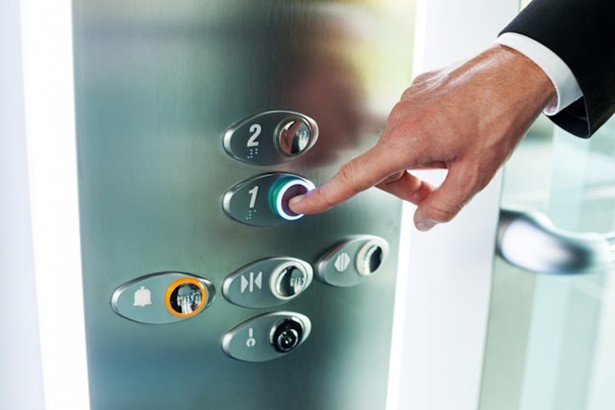In-home mobility solutions have become an essential feature in many Florida residences, offering convenience, accessibility, and a touch of luxury, according to TG Property Management. Whether installed for aging-in-place solutions, enhanced mobility, or to add value to a home, these systems must meet stringent safety standards to protect homeowners and their guests.
With Florida’s specific building codes and national regulations governing home elevator installations, compliance is not just a recommendation, it’s a necessity. Adhering to safety protocols helps prevent risks such as entrapment, mechanical failures, and other hazards. Partnering with experienced Florida elevator companies ensures a smooth installation process, as they have the expertise to navigate local codes and deliver a safe, reliable solution.
Compliance with safety codes isn’t just about following the law, it’s about protecting lives. Residential mobility systems involve complex mechanical components that, if not properly installed and maintained, can pose serious safety risks. Florida homeowners must ensure that their systems meet both state and national safety codes to avoid accidents and potential legal liabilities.
Several key factors make compliance particularly important in Florida:
Hurricane and Storm Resilience: Florida’s susceptibility to extreme weather requires mobility systems to be designed and installed with structural integrity to withstand high winds and power outages.
Aging Population: Many Florida residents install these systems to facilitate aging in place. Safety is critical for those with mobility limitations.
Real Estate Value: Properly installed and compliant mobility solutions add significant value to a home, making it more appealing to potential buyers.
Insurance Requirements: Many home insurance providers require that installations meet all local and national safety standards before providing coverage.
To meet these requirements, homeowners should collaborate with manufacturers and installers who prioritize safety and compliance at every step.
Several regulatory bodies oversee home mobility system safety in Florida. Homeowners and contractors must adhere to the following safety standards:
The Florida Building Code (FBC) outlines structural and mechanical safety requirements for residential mobility systems. It ensures that these systems are designed to withstand Florida’s unique environmental conditions, including humidity and hurricane-force winds.
Key FBC requirements include:
The American Society of Mechanical Engineers (ASME) A17.1 code is a national safety standard that governs all aspects of lifting system design, construction, and operation. Residential installations must meet ASME’s stringent guidelines to ensure safe and reliable performance.
Key ASME safety provisions include:
Emergency Communication Systems: Systems must have a working phone or alarm system for emergencies.
Proper Clearance & Entrapment Prevention: Gap sizes between moving parts and landing doors must meet strict guidelines to prevent entrapment, especially for children.
Weight Capacity & Overload Protection: Systems must be designed to handle weight limits without mechanical failure.
Safety Brakes & Emergency Stop Mechanisms: These features prevent sudden drops or malfunctions.

Although ADA compliance is not mandatory for private residences, many homeowners choose to follow ADA guidelines when installing mobility solutions. This ensures accessibility for all users, including those with mobility impairments.
ADA-compliant systems feature:
Wider Access Points: Allowing wheelchair access.
Lowered Control Panels: Making buttons accessible for individuals with disabilities.
Non-Slip Flooring: Reducing the risk of slips and falls.
Proper electrical wiring and grounding are critical to safety. The National Electrical Code (NEC) mandates safe electrical connections, backup power systems, and emergency lighting to ensure continued function, even during power outages.
Although private residential mobility systems are not required to undergo routine state inspections like commercial installations, Florida law mandates that they be installed by a licensed contractor. Additionally, homeowners should schedule annual safety inspections to ensure continued compliance with safety standards.
Homeowners should collaborate with reputable manufacturers who prioritize compliance and safety. The best manufacturers assist with:
Precise Specification Writing: Ensuring that designs meet Florida’s building codes and safety standards before installation.
Certified Installation Teams: Partnering with licensed contractors trained in state and national regulations.
Pre-Installation Site Assessments: Evaluating homes to recommend the safest and most compliant model.
Ongoing Maintenance & Support: Providing long-term service to ensure continued compliance.
By working with experts, homeowners can feel confident that their mobility system installation meets all necessary regulations.
A compliant mobility system should include the following safety features:
To prevent accidents, all residential systems must have interlocking door mechanisms that keep the unit from operating unless the doors are securely closed.
Power outages are common in Florida, particularly during hurricane season. An emergency battery backup ensures continued operation even if the home loses electricity.
Modern systems are equipped with motion sensors that detect obstructions and stop movement to prevent injury.
A two-way communication system allows passengers to contact emergency services if they become trapped inside.
Compliant installations use fire-resistant materials and adhere to local fire safety regulations to minimize risks in case of a fire.
While contractors and manufacturers handle much of the compliance process, homeowners should also take proactive steps:
Hire Licensed Professionals: Always work with licensed installers who are familiar with Florida’s building codes.
Request Documentation: Ensure that all installation work is documented and meets ASME, FBC, and NEC requirements.
Schedule Regular Maintenance: Routine inspections help identify potential safety issues before they become serious problems.
Stay Informed: Understanding local regulations helps homeowners ensure long-term compliance.
Installing a home mobility system in Florida offers convenience, luxury, and long-term accessibility solutions. However, compliance with safety standards is essential to protect residents and ensure a reliable system.
By adhering to Florida Building Codes (FBC), ASME A17.1 safety standards, ADA guidelines, and NEC electrical codes, homeowners can prevent accidents and maintain a secure home environment. Collaborating with experienced manufacturers and licensed contractors ensures that installations meet all necessary safety requirements, providing peace of mind and long-term reliability.
A well-installed, code-compliant mobility solution not only enhances daily life but also adds significant value to Florida homes, making it a smart investment for both present and future needs.